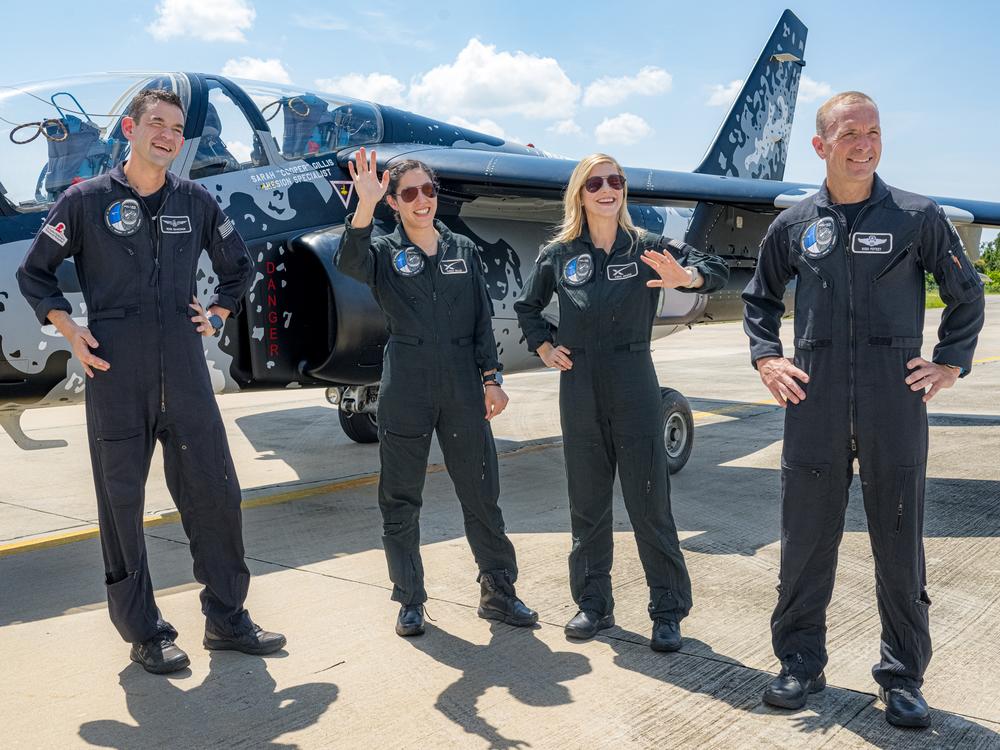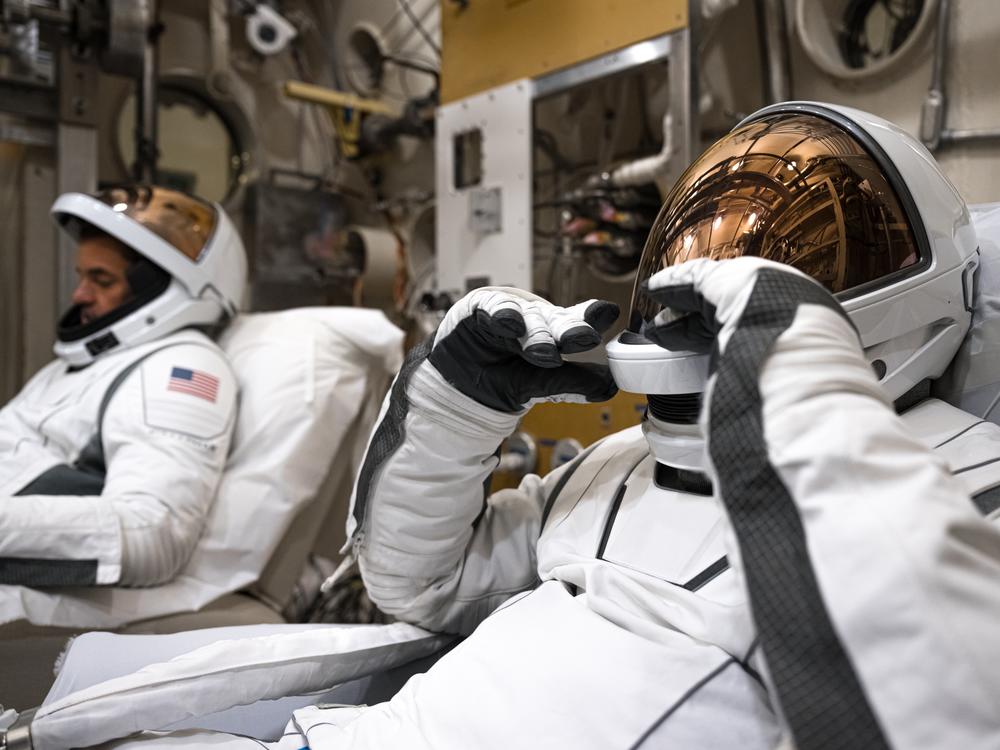Section Branding
Header Content
Civilian Polaris Dawn spacewalk mission is set to make history next week
Primary Content
If billionaire cosplay sits at one end of the spectrum of private space travel and scientific research at the other, the Polaris Dawn mission aims to move the needle toward the latter.
The ambitious SpaceX mission, 2½ years in the making, would put four astronauts into an ultra-high orbit around Earth. It has a full agenda of experiments and tests, many of which focus on human health in space.
There’s also a spacewalk — poised to be a first for a private mission — that will rely on simply opening a hatch on the spacecraft.
“We are going to vent the vehicle entirely down to vacuum,” Polaris leader Jared Isaacman said on Monday. “There's no airlock on Dragon.”
Here’s a quick guide to the upcoming mission:
When does Polaris Dawn launch?
The five-day mission is slated to launch on Monday, Aug. 26, and return on Saturday, Aug. 31, according to the most recent guidance.
The astronauts’ SpaceX Crew Dragon capsule will ride into space aboard a SpaceX Falcon 9 rocket taking off from Launch Complex 39A at NASA's Kennedy Space Center in Florida. The facility is selling tickets for the launch, which has a window between 3:30 a.m. and 7 a.m. ET.
Who are the astronauts?
The crew is: Shift4 Payments founder Jared Isaacman (mission commander) and former Air Force pilot Scott “Kidd” Poteet (pilot), along with SpaceX engineers Sarah Gillis (mission specialist) and Anna Menon (mission specialist/medical officer).
The four have trained together in a variety of extreme settings, from skydiving and scuba diving to climbing Mount Cotopaxi in Ecuador. And then there were the simulations. Poteet, a 20-year Air Force veteran, says the crew spent some 2,000 hours in a simulator, practicing scenarios from nominal procedures and contingency operations to emergency actions.
“To put this in perspective, I flew fighters for 20 years,” Poteet said. In that time, he said, he “accomplished about 1,500 hours in the simulator training for combat.”
Isaacman, an avid pilot and entrepreneur, has paid for three SpaceX flights, dubbing them the Polaris program. The first two flights use the SpaceX Dragon and Falcon 9 system, but the third is slated to use the Starship vehicle, which is in the testing phase.
“It could very well be the 737 for human space flight someday,” Isaacman said of Starship. “But it'll certainly be the vehicle that will return humans to the Moon and then on to Mars and beyond.”
What will the Polaris astronauts do in orbit?
The mission revolves around several big milestones. In its first phase, the capsule will fly to the “highest altitude of any human spaceflight mission in more than a half-century since the Apollo program,” according to an update released on Monday.
“We get into space in about 10 minutes,” Menon said.
With an orbital altitude topping out around 1,400 kilometers (870 miles) from Earth’s surface, the Polaris mission will move through the inner regions of the Van Allen radiation belt. The craft’s nose will be oriented to minimize the astronauts’ exposure to radiation. Along the way, data about the crew’s health and the craft’s performance will be collected.
“It is a different radiation environment, it is a different micrometeorite orbital debris environment,” Isaacman said. “And we stand to learn quite a bit from that, in terms of human health science and research.”
After a brief visit to high orbit, the capsule will descend to a new cruising orbit with an apogee some 435 miles above Earth.
“About an hour after getting [to orbit], we will start our ‘pre-breathe’ protocol,” Menon said. The procedure is designed to help the astronauts adjust to what’s coming: the pressure change of opening the craft to the vacuum of space. The process is meant to eliminate nitrogen from their bodies, to lower the risk of decompression sickness.
The second day will bring more spacewalk preparations, including checks of the four extravehicular activity (EVA) spacesuits that were specially designed for this mission by SpaceX.
Day three will bring the EVA itself, in which two crewmembers will exit the spacecraft. With the craft’s interior exposed to vacuum conditions, all four astronauts will receive oxygen through tethers that also supply life support. The operation will require around two hours from venting to repressurizing the craft.
The fourth day is aimed at testing laser communications using SpaceX’s Starlink network, with an eye toward eventually supporting missions to the Moon and Mars.
Day five will be devoted to finishing some 40 scientific experiments, many of which aim to glean more knowledge about how the human body reacts to space.
“Then we will begin our reentry preparations and that brings us to flight day six,” Menon said. “We will don our spacesuits, re-enter through Earth's atmosphere and then splash down off the coast of Florida.”
Will there be snacks?
Yes: Doritos has made a special version of its Cool Ranch flavored chips — along with a $500,000 donation to St. Jude Children's Research Hospital, Polaris Dawn's charity cause.
The new “zero gravity” version of the chip locks the flavor in with an oil-based coating — a tweak that, along with a smaller chip size, makes the snack safer in space, by reducing potential threats of wayward spice powder and tortilla crumbs.
It’s not the first space project for Doritos. In 2008, the company beamed an ad from a European space station in the Arctic Circle that was “directed towards potential extra terrestrial life” in space, according to an announcement from the University of Leicester, which coordinated the project.


